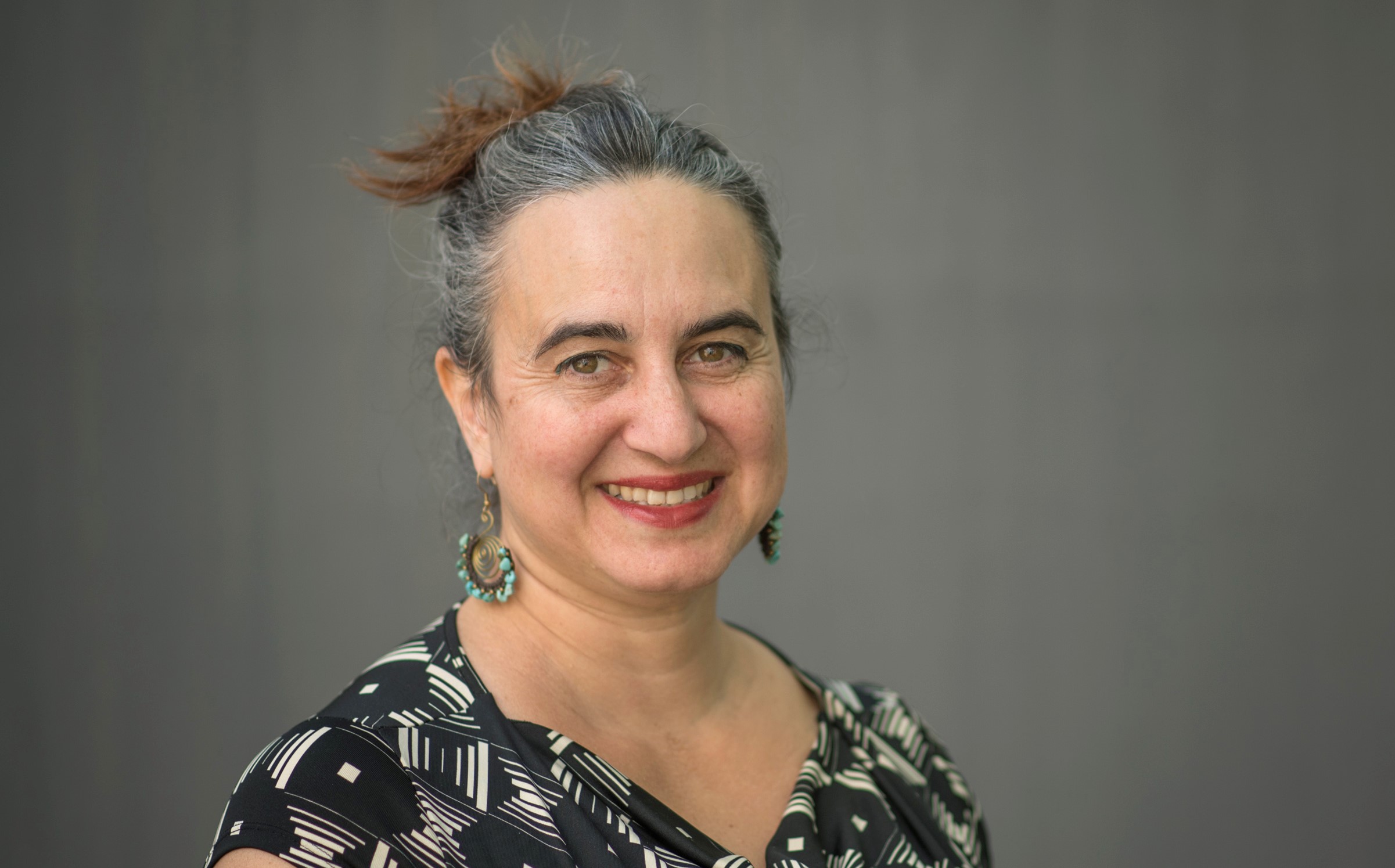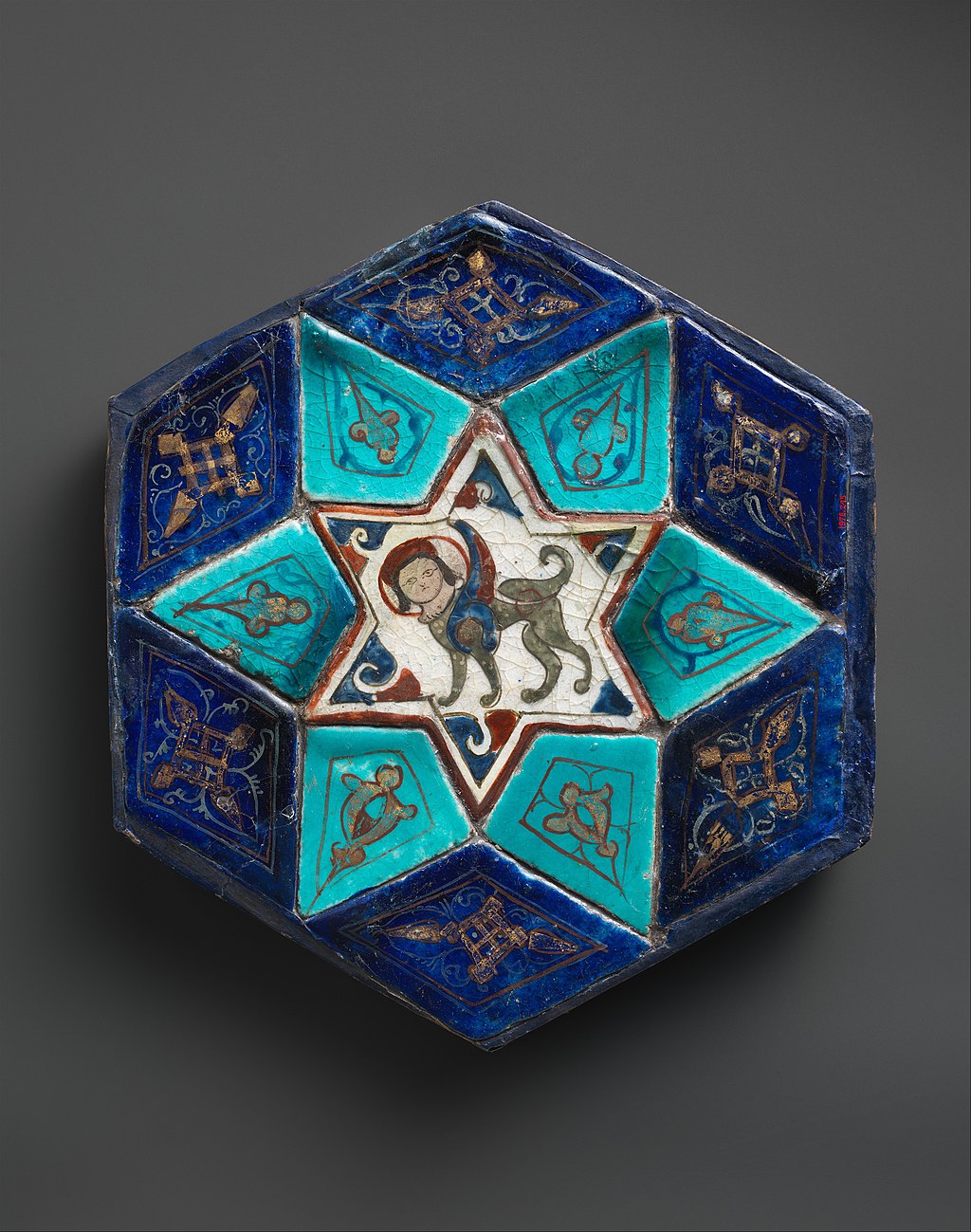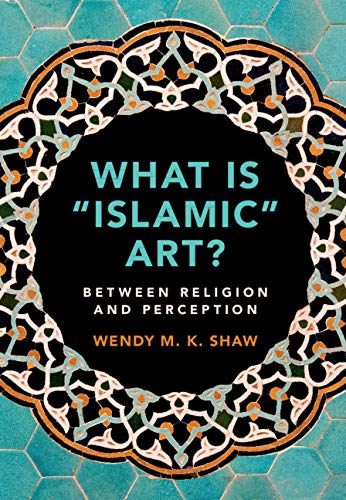What is art, when the primary sensory organ is the heart?

Professor Shaw, when thinking in terms of Islamic art, many readers in the West will have vague notions of non-figurative representations, of patterns and calligraphy. How accurate is this image?
Wendy Shaw: I think there are two things people readily associate with Islamic art. The first is the idea of image prohibition. The second is the presence of elements often thought of as ornamental, including surface patterns and calligraphy. Regarding the first: there is no image prohibition, just as there is no image prohibition in the Jewish tradition. Both legal traditions are discursive, so structurally such an overall, universal ban has no central governing authority.
Extensive discussions within the Islamic world about the meanings and effects – ranging from idolatry to union with the divine – of various types of representation go well beyond our understanding of the pictorial. Often expressed in narrative or poetic rather than direct forms, such discussions include how pattern, music, and even dreams may function as representations.
In everything from writing to architecture, they cross the boundaries between text, sound, image, and materiality. Hence the idea of "ornament" as opposed to "meaningful representation" doesn’t work.
The common discussion of an image ban isn’t just incorrect, it’s boring. It masks an exciting, complex intellectual and aesthetic history that expands how we can take in and express our relationships with the world.
You write about “discovering that which is not art history”. What has been the role of art – and perhaps, more specifically, poetry – in Islam over the centuries?
Shaw: The terms "art" and "history" place certain objects deemed to be "beautiful" or "treasured" in a framework across time and place. But neither these designations of value, nor their engagement with time and place, govern the meanings of things as they are experienced within a culture.
Your dining table may come from IKEA, but its meaning for you derives from the meals and conversations you have around it. If I recognise the time and place of your table, it is not incorrect, but it certainly doesn’t define your culture. Likewise, a tile from 13th century Anatolia made under the Seljuk Dynasty tells me nothing about the culture of the people who saw it on their wall, and even less about the culture of people in Anatolia today.
I try to pay attention to how people in that past expressed their relationship with being human in the world, including their perceptions of the divine through created forms we think of as art. They often expressed themselves in poetry. This poetry was linked to diverse traditions, both beyond the Islamic – such as Greek philosophy and Christianity, Judaism, Buddhism, and Hinduism – and included theological knowledge.
Recognising these relationships, I consider how the objects we see as "art" conveyed meaning for the people who lived with them, in the terms they would use – rather like we make sense of our world through song lyrics, movie quotations, and literature.

What has shaped our appreciation of art in Europe and the western world?
Shaw: Since our contemporary categories can never cover all times and all places, historians love to consider the history of the words and categories we use. A fascinating book published by Larry Shiner in 2001 called The Invention of Art talks about how this category is specific to the growth of capitalism in Western Europe.
Many investigations of art history, especially those since the 1980s, consider how the category has been used to construct and propagate a story for the present that fits contemporary values – individual genius, specialisation, competitiveness, and secularism. So how did European discussions of perspective and definitions of the image come to frame the categories we now regard as normal?
In the nineteenth century, the study of "art history" became one way in which a region previously framed as "Christian" could be re-thought in terms of "the West", transferring many practices previously associated with worship to the appreciation of art.
These modern categories frame our understanding; yet we can expand it by recognising multiple categories. This is different from what global art history generally does in adding other cultures to a set of terms and a group of methods already built into art history.
While my book examines the way in which perception is expressed in Islamic discourses, many colleagues have commented to me that its observations are also relevant for those researching medieval Europe, when people did not engage with the world through terms like "art" and "secularism" and "history".
You refer to the impact colonial, Euro-normative art has had on our ability to truly appreciate art from elsewhere. How can we free ourselves from this "naive gaze"? Where do we go from here?
Shaw: I wouldn’t say our gaze is naive or empty, but rather that it is already full. We carry who we are with us all the time, which often prevents us from thinking in new ways. In saying this, I am not really differentiating between Muslim and non-Muslim people: we are all modern together, meaning we encounter the world through shared understandings of terms like art, religion, secularism, history, images and vision. It is not so much incorrect, as limiting.By engaging with how other cultures express themselves, we can mentally step into their frame of reference. If I read a lot of Islamic poetry, I start recognising my world through these terms. When we displace ourselves from one way of thinking to another, we move away from learning about the other – from a position of dominance – to learning from the other, enabling egalitarian recognition.
For art history to become decolonialised, we need to move away from applying modern European terms to the rest of the world. Instead we need to step back and recognise other categories… then allow these categories to inform our new explorations. My work focuses on a few aspects of the vast range of what constitutes "Islamic" culture, yet that is only one of many frameworks through which we can learn to take in the world. We stand to benefit hugely from this movement of mutual and egalitarian respect between cultural systems.
"Like an electron moves between orbits in an atom"
What is "perceptual culture" and what are the practical implications for art professionals?
Shaw: Personally, I’ve become increasingly aware of how words limit the world I’m trying to understand. I started with "art", but then realised I had to include music, ritual, astronomy, poetry, and dreams; that what I was addressing did not imply any opposition to "nature", as implicit in the European tradition of culture versus nature. It was obvious I needed a category bigger than art, indicating the practice of taking in the world through created things.
This is what I call perceptual culture: the culture, or set of forces, that informs how we apprehend the world. My suggestion is that we can move between perceptual cultures like an electron moves between orbits in an atom. This movement requires energy: it takes work to move, and research, and read – but it can also emit light, a photon in physics, and insight for us. The practices we moderns recognise as art require this ability to think outside of what we already know – it is what we call insight, or inspiration. Moving between perceptual cultures is like travel, less of the body, than of the mind, or even of the soul.
Anyone who draws knows how you start to see the world differently when drawing. When I draw geometric patterns, copy manuscript paintings, or play classical Arab-Turkish music on my oud, I begin to encounter the world around me differently. Similarly, when I read poetry from the Islamic world (in translation), I not only start recognising their metaphors in the world around me, but articulating my thought through metaphors that often communicate more effectively than direct speech.

People who practice rituals – meaning anything from religious practice to ceramics or yoga or running – also experience similar effects. The culture through which we engage with the world depends on what we do in it. As we learn more from multiple sources, we recognise and express ourselves in multiple perceptual cultures.
Cross-cultural engagement has long been analysed through the idea of "influence", considered inspirational for the mining of patterns – from nineteenth century industry to contemporary discussions of cultural appropriation. But this is all on the surface. Surfaces reflect deep histories and a wide variety of meaningful encounters.
Islamic perceptual culture blurs many of the boundaries we normalise, between both the senses and different media. What is art, when the primary sensory organ is the heart?
Architecture can be poetry; music can represent; geometry teaches without symbols. It is impossible to predict what anybody, artists included, is going to discover by absorbing multiple perceptual cultures. One thing is for certain, however: by putting in the effort to jump outside of our normal orbits, we grow. And maybe, if we are lucky, when we jump back, we might just shine.
Does the European art history tradition retain any value at all in post-colonial, twenty-first century discourse? How do we reconcile its established premises within such expanded terms of reference?
Shaw: Since about the 1990s, post-colonial art history – including much of my early work – has been concerned with the "what", expanding the canon of what can be included as art, in terms of both region and in terms of the distinction between art and craft. This is because a strong underlying interest in art history, the "why", has been to underscore collective national identities with clear histories. Yet the "when" – how methods serve different needs at different times – has changed, reflecting our changing needs and interests. As a result, our methods need to evolve too.De-colonialisation and a multiplicity of methods
The addition I propose is not post-colonial, but de-colonial. It suggests that there are multiple ways of knowing about the world, informed by multiple perceptual cultures. I continue to value the art historical knowledge I have, placing things in time and place, interpreting their iconographic meanings and so on. But I also value other ways of knowing, informed, for example, by the Islamic poetic tradition.
My proposition is not competitive; it isn’t that one way of knowing is better than the others. It is that there is a richness of methods available in multiple perceptual cultures that current ways of knowing (in art history and otherwise) fail to recognise. De-colonial art history enables the recognition of these methods in their multiplicity.
Such multiplicity is normal for me. It has taken me half a lifetime to be able to articulate that, because the modern world conditions us through ideologies of nationalism, by which we define ourselves categorically. But many of us are migrants, with complex combinations and legacies of movement across place, as well as across class.
Many of us practice multiple cultures at the same time. We code shift; we shape shift. We have become so used to systems of dominance that claiming equality appears radical, when it is actually quite basic. So of course European art and art history retain value. But value doesn't have to be at the cost of others.
There has been much discussion in recent years concerning the integration of migrants and specifically Muslims into the culture of a "Judeo-Christian" Europe. Where do you stand on this?
Shaw: Judeo-Christian is one of those terms that seem self-explanatory. But consider this: in 1933, there was no "Judeo-Christian West". The term Judeo-Christian was initially used in Germany as a Protestant smear against Catholics for remaining "blind" to the true religion, and therefore too Jewish.
In the 1950s, it was recycled in the United States as a tool of integration, from which it spread to Europe – at a time when Europe had, after a thousand years of periodic persecutions (since the First Crusade), practically decimated its Jewish populations. "Judeo-Christian Europe" suggests a Biblical legacy, but it depends on the physical absence of Jews. Likewise, there aren’t many Jews in overviews of European art history. So I’d contest that it’s a term of integration; I’d categorise it as a myth that enabled the reunification of Europe, and its continued self-identification in opposition to Islam.
Islam is no more foreign to "the West", than the West is foreign to Islam
Conversely, parts of Europe were ruled under Islamic hegemony for eight hundred years in Spain and five hundred years in the Balkans, under which both Jews and Christians lived, if not as equals, as relatively protected populations – this is clear because they survived, even flourished, often as majority populations. This is not to say everywhere was peaceful, but neither alliances nor disputes always fell along religions lines.
Islamic cultures are integral to Europe, both constructively (everything from Algebra to Flamenco to courtly love to optics), and in Europe’s self-recognition in opposition to Islamic forces coming from the South and the East. Islam is also integral to the Americas – about a quarter of slaves purchased in West Africa were Muslim; much of the Spanish aesthetic of my home state, California, is inherited from Islamic culture in Andalusia. Islam is no more foreign to "the West", than the West is foreign to Islam.
Having thought about these relationships, we can reconsider the myths that circulate in our societies. Myths bridge two realities: more than representing the past, they address the needs of the time when they emerge and the ways in which they persist. The post-war needs may not be the same as ours, and it may be time for institutions like museums and newspapers to start propagating less exclusive myths. I find it strange that supposedly secular societies still use religion to naturalise distinctions of that other ugly myth called "race".
What hope does your approach offer for moving beyond such pressure to conform?
Shaw: There is no necessary or natural contradiction between religious groups – the oppositions are political; the histories and beliefs, both in terms of the Abrahamic and philosophical traditions, are largely shared.
There’s the old question of: if Moses, Jesus, Muhammad, and the Buddha (and we could add many others) miraculously met, would they fight or embrace? I have a hard time imagining them fighting, but their supposed followers have often done a terrible job learning from their examples.
We need to recognise that the stories we tell about the past aren’t simple narrations of truth; they produce the world as a reflection of certain interests. When you speak of pressure to conform, we need to think about the moments when each of us decide to conform to things with which we may not agree, or which we find unethical or unfair. In many areas of life, we have forgotten how to constructively discuss, rather than yell out positions or stay silent. We have lost the trust that enables and builds communities, critical to that framework of discussion. So I find the question is much bigger than that of "integration" or "assimilation".
The question is this: how do we move from societies with static understandings of uniformity that merely tolerate "others", to those that grow through collective engagement with multiple kinds of diversity? How do we enact this in our local experience, as well as in our interaction with new people and cultures? I hope my work contributes to the many voices that replace a focus on opposition with one of mutual engagement, curiosity, and affection.
Interview conducted by Lucy James
© Qantara.de 2021
Wendy M. K. Shaw is professor of the art history of Islamic cultures at the Free University Berlin. She received an honourable mention from the Albert Hourani Book Award 2020 for her latest work "What is Islamic art? Between religion and perception", published by Cambridge University Press. It was only the second time an art historian had received such recognition in the field of Middle Eastern Studies.